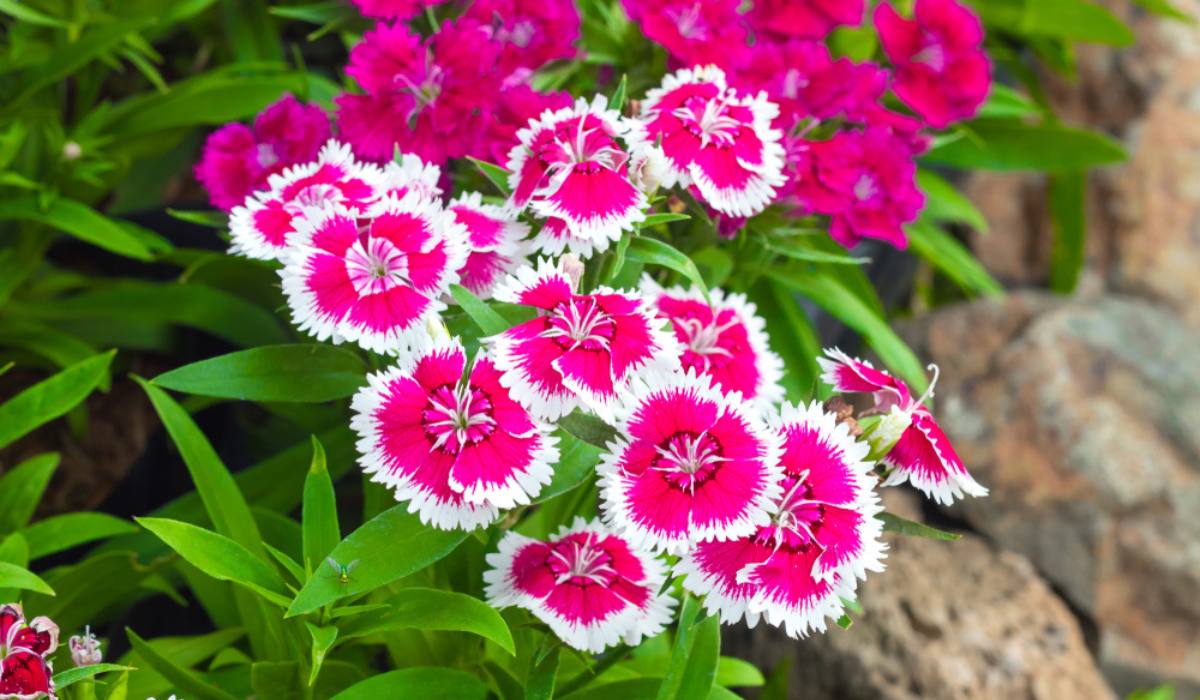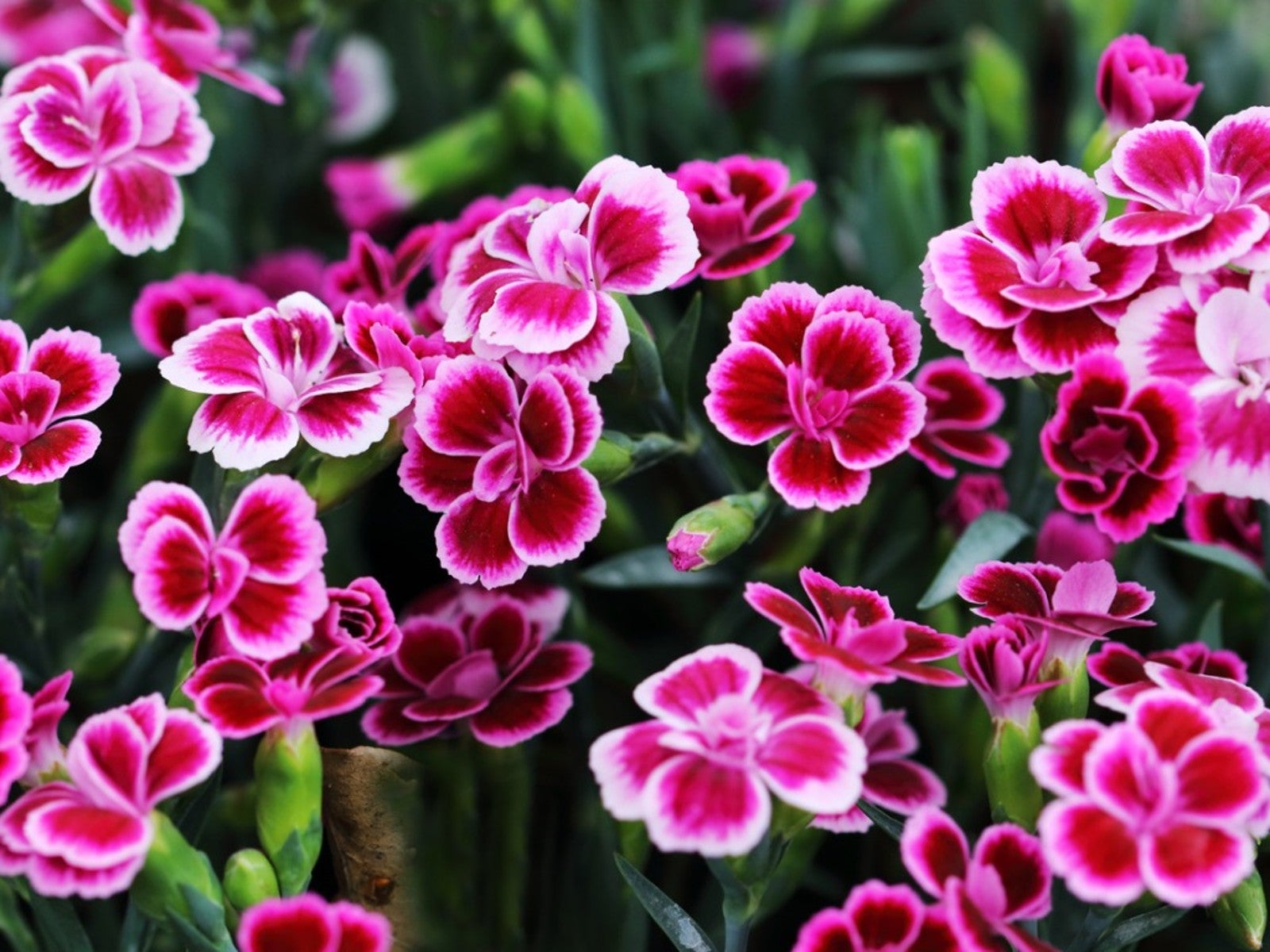Dianthus flowers, commonly known as carnations or pinks, are popular garden flowers appreciated for their colorful blooms and pleasant fragrance. Here are some guidelines on how to grow and care for Dianthus flowers:

1. Choose the Right Location
Dianthus plants thrive in well-drained soil and prefer full sun to partial shade. Select a location in your garden that receives at least 6 hours of sunlight per day.
2. Soil Preparation
Prepare the soil by adding organic matter such as compost or well-rotted manure to improve drainage and fertility. Dianthus plants prefer slightly alkaline soil with a pH range between 6.0 and 7.5.
3. Planting
Plant Dianthus flowers in the spring after the danger of frost has passed. Space the plants 12-18 inches apart, depending on the variety. Dig a hole slightly larger than the plant's root ball, place the plant in the hole, and backfill with soil. Water thoroughly after planting.
4. Watering
Water Dianthus plants regularly to keep the soil evenly moist, especially during dry periods. Avoid overwatering, as Dianthus is susceptible to root rot. Water at the base of the plant to prevent fungal diseases.
5. Fertilization
Apply a balanced fertilizer or a fertilizer formulated for flowering plants in the spring when new growth appears. Follow the manufacturer's instructions for application rates. Avoid over-fertilizing, as excessive nutrients can lead to lush foliage but fewer flowers.
6. Deadheading
Remove spent flowers regularly to encourage continuous blooming throughout the growing season. This process, known as deadheading, redirects the plant's energy into producing new blooms rather than setting seeds.
7. Mulching
Apply a layer of organic mulch, such as shredded bark or straw, around the base of Dianthus plants to conserve moisture, suppress weeds, and regulate soil temperature. Mulching also helps prevent soil splashing onto the foliage, reducing the risk of fungal diseases.
8. Pest and Disease Control
Keep an eye out for common pests such as aphids, spider mites, and trips, which may infest Dianthus plants. Use insecticidal soap or neem oil to control pests if necessary. Additionally, ensure good air circulation around the plants to minimize the risk of fungal diseases such as powdery mildew and rust.
9. Winter Care
In regions with cold winters, provide protection for Dianthus plants by applying a layer of mulch around the base of the plants in late fall. This helps insulate the roots and prevents frost heaving.
10. Division and Propagation
Dianthus plants benefit from division every few years to maintain vigor and prevent overcrowding. Divide mature clumps in the spring or fall, replanting the divisions in well-prepared soil. Dianthus can also be propagated from stem cuttings or by sowing seeds indoors in early spring.

Dianthus flowers, also known as carnations or pinks, are cherished for their vibrant hues, delicate petals, and delightful fragrance. Whether adorning garden beds, containers, or bouquets, these charming blooms add a touch of elegance to any landscape. Discover the secrets to cultivating thriving Dianthus plants with our comprehensive guide.
Related posts:
New Year's Decorations, Ideas, and Recipes. Make your New Year's Eve party the talk of the town with cool recipes, trendy decorations, and some fun ideas. Decorate your home beautifully with Balloon decorations this New Year 2024. Make your room,...
Eco-friendly home designs in India aim to create sustainable and environmentally responsible living spaces. These designs incorporate various features and practices to reduce energy consumption, minimize waste, and use renewable resources. Here are some popular eco-friendly home design elements in...


 How to grow and care for Dianthus flowers?
How to grow and care for Dianthus flowers?
 New Year Party Decoration Ideas For Home
New Year Party Decoration Ideas For Home
 Best Eco-Friendly Home Designs In India
Best Eco-Friendly Home Designs In India
 Real Estate Investing
Real Estate Investing
 7 Open House Food Ideas
7 Open House Food Ideas